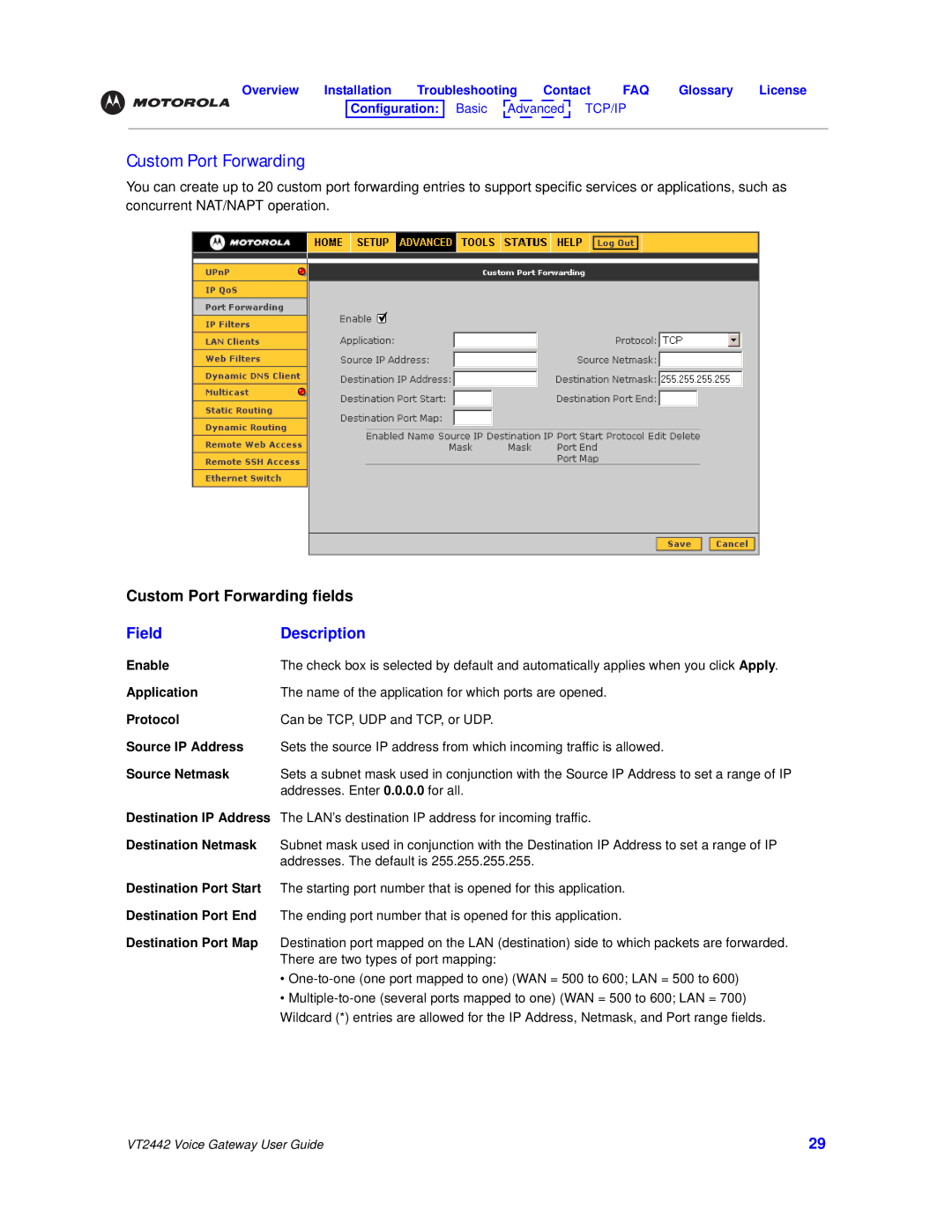
Overview | Installation | Troubleshooting |
|
| Contact | FAQ | Glossary | License | |||||||||
|
|
|
| Basic |
|
| Ad |
| an |
|
|
|
|
|
|
|
|
|
| Configuration: |
|
| v | ced |
| TCP/IP Wireless |
| ||||||||
|
|
|
|
| |||||||||||||
|
|
|
|
|
| ||||||||||||
|
|
|
|
|
|
|
|
|
|
|
|
|
|
|
|
|
|
Custom Port Forwarding
You can create up to 20 custom port forwarding entries to support specific services or applications, such as concurrent NAT/NAPT operation.
Custom Port Forwarding fields
Field | Description |
Enable | The check box is selected by default and automatically applies when you click Apply. |
Application | The name of the application for which ports are opened. |
Protocol | Can be TCP, UDP and TCP, or UDP. |
Source IP Address | Sets the source IP address from which incoming traffic is allowed. |
Source Netmask | Sets a subnet mask used in conjunction with the Source IP Address to set a range of IP |
| addresses. Enter 0.0.0.0 for all. |
Destination IP Address | The LAN’s destination IP address for incoming traffic. |
Destination Netmask | Subnet mask used in conjunction with the Destination IP Address to set a range of IP |
| addresses. The default is 255.255.255.255. |
Destination Port Start The starting port number that is opened for this application.
Destination Port End The ending port number that is opened for this application.
Destination Port Map Destination port mapped on the LAN (destination) side to which packets are forwarded. There are two types of port mapping:
•
•
VT2442 Voice Gateway User Guide | 29 |
